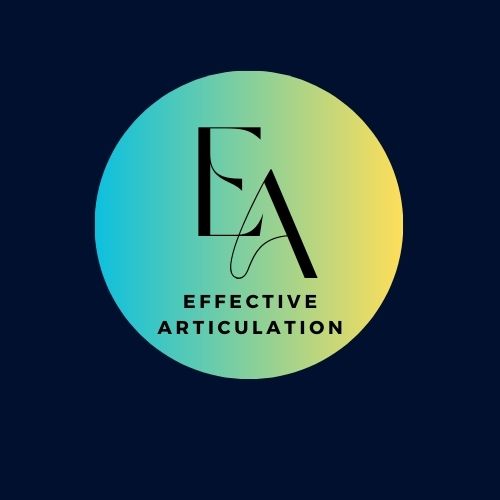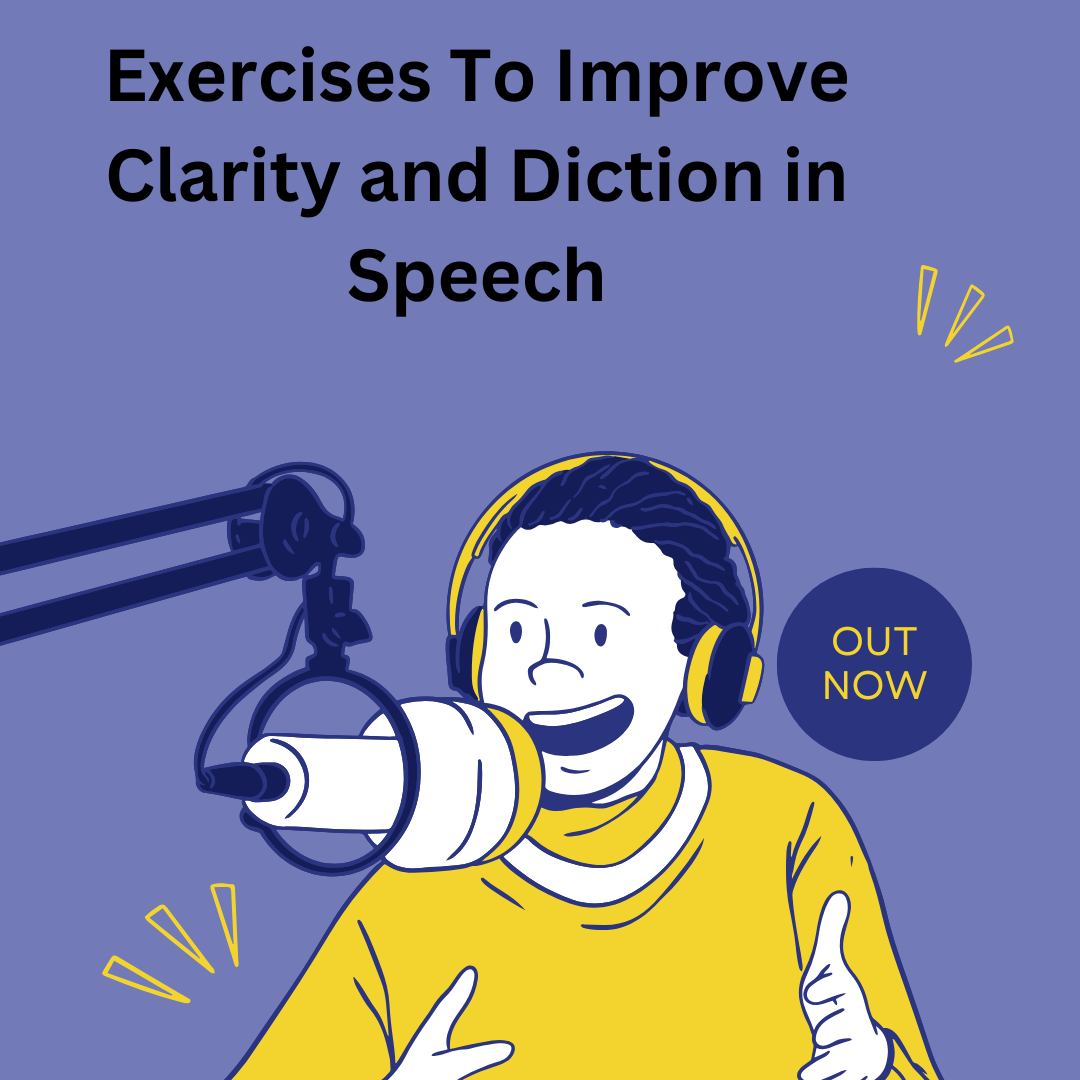Let’s talk about something we all want but don’t always know how to achieve: clear, confident speech.
Whether you’re giving a presentation, leading a meeting, or just chatting with friends, how you speak matters. Clear diction and articulation can make you sound more professional, engaging, and trustworthy.
But here’s the catch. Clear speech doesn’t just happen. It takes practice.
The good news? Improving your clarity and diction is easier than you think. With a few simple exercises, you can train your mouth, tongue, and breath to work together seamlessly, helping you communicate with precision and confidence.
In this post, we’ll explore some of the best exercises to sharpen your speech and make every word count.
Why Clarity and Diction Matter
Before we dive into the exercises, let’s talk about why clarity and diction are so important.
- First impressions count: Within seconds of hearing you speak, people form opinions about your confidence, intelligence, and credibility. Clear speech helps you make a strong first impression.
- Better communication: When your words are easy to understand, your message is more likely to land. This is especially important in professional settings, where miscommunication can lead to mistakes or misunderstandings.
- Increased confidence: Knowing that you speak clearly and effectively can boost your self-esteem and help you feel more comfortable in social and professional situations.
Now that we’ve covered the why, let’s get into the how.
1. The Mirror Exercise: Watch Yourself Speak

What It Does
This exercise helps you become more aware of your mouth movements and facial expressions, which are key to clear speech.
How to Do It
- Stand in front of a mirror.
- Choose a sentence or short paragraph to read aloud.
- Speak slowly and deliberately, paying attention to how your mouth moves.
- Notice if your lips, tongue, and jaw are fully engaged. Are you opening your mouth wide enough? Are your facial expressions matching your words?
Pro Tip
Try exaggerating your mouth movements at first. This might feel silly, but it helps train your muscles to move more effectively.
2. Tongue Twisters: The Ultimate Diction Workout

What It Does
Tongue twisters are a fun and challenging way to improve your articulation and train your tongue to move quickly and accurately.
How to Do It
Start with simple tongue twisters and gradually work your way up to more complex ones. Here are a few to try:
- “She sells seashells by the seashore.”
- “Peter Piper picked a peck of pickled peppers.”
- “How can a clam cram in a clean cream can?”
Pro Tip
Focus on accuracy before speed. Say the tongue twister slowly at first, making sure each word is clear. Then, gradually increase your speed.
3. The Pencil Exercise: Strengthen Your Articulation Muscles
What It Does
This exercise strengthens the muscles in your lips, tongue, and jaw, making it easier to articulate words clearly.
How to Do It
- Place a pencil horizontally between your teeth.
- Read a sentence or paragraph aloud while holding the pencil in place.
- Focus on enunciating each word as clearly as possible, even though the pencil makes it more difficult.
Pro Tip
Start with short sentences and gradually work your way up to longer passages. This exercise is tougher than it sounds, so be patient with yourself!
Best Ways To Build A Strong Personal Brand As A Public Speaker
How To Make Money With Public Speaking
4. Breath Control: The Foundation of Clear Speech
What It Does
Breath control is essential for clear, strong speech. When you breathe deeply and evenly, you have the support you need to project your voice and articulate words effectively.
How to Do It
- Stand up straight with your shoulders relaxed.
- Place one hand on your chest and the other on your stomach.
- Take a deep breath in through your nose, feeling your stomach expand.
- Exhale slowly through your mouth, making a “ssss” sound. Aim for a steady, controlled exhale.
Pro Tip
Practice this exercise daily to build your breath control. Over time, you’ll notice that your speech becomes more powerful and sustained.
How To Use Humor And Storytelling In Public Speaking : A Winning Combination
5. The Slow-Motion Exercise: Master Precision

What It Does
This exercise forces you to slow down and focus on each sound, helping you identify and correct articulation issues.
How to Do It
- Choose a sentence or phrase to practice.
- Say it in slow motion, exaggerating each sound. For example, say “The quick brown fox jumps over the lazy dog” as “Thhhheeee quuuuuiiiiickkkkk broooowwwwwnnn fffooooxxxxx jjjjjuuuuummmppppssss oooovvvvveeeerrrr thhhheeee llllaaaazzzzyyyy ddddoooogggg.”
- Gradually speed up until you’re speaking at a normal pace.
Pro Tip
This exercise is especially helpful for tackling tricky sounds or words. If you struggle with a particular sound, spend extra time on it in slow motion.
How To Join Toastmasters And Transform Your Public Speaking Skills
Check out the review of AmazingPublicSpeaking.com
6. The Whisper Exercise: Focus on Clarity
What It Does
Whispering force you to articulate clearly because you can’t rely on your voice for volume. This exercise helps you focus on precision and control.
How to Do It
- Choose a sentence or paragraph to practice.
- Whisper it aloud, making sure each word is clear and distinct.
- Pay attention to how your mouth and tongue move to form each sound.
Pro Tip
This exercise is great for practicing in public places where you don’t want to draw attention. Just whisper quietly to yourself!
Best Public Speaking for Beginners
Overcoming Common Public Speaking Mistakes
7. The Articulation Drill: Target Problem Sounds
What It Does
This exercise helps you identify and improve specific sounds or words that are difficult for you to pronounce.
How to Do It
- Make a list of words or sounds you struggle with. For example, if you have trouble with the “th” sound, list words like “think,” “this,” and “bath.”
- Practice saying each word slowly and clearly, focusing on the problem sound.
- Gradually increase your speed as you become more comfortable.
Pro Tip
Record yourself saying the words and listen back. This will help you identify areas for improvement.
8. The Reading Aloud Exercise: Build Confidence and Fluency

What It Does
Reading aloud helps you practice clear speech in a low-pressure setting. It also improves your fluency and rhythm.
How to Do It
- Choose a book, article, or script to read.
- Read aloud for 5–10 minutes each day, focusing on clarity and diction.
- Pay attention to punctuation and pauses, and try to vary your tone and pitch.
Pro Tip
Choose material that interests you to make the exercise more enjoyable. Poetry, speeches, and dialogue-heavy scripts are great options.
Top Recommended Public Speaking Skills Books on Amazon: Elevate Your Speaking Game!
Final Thoughts
Improving your clarity and diction is like training for a marathon—it takes time, effort, and consistency. But with these exercises, you’ll be well on your way to speaking more clearly and confidently.
Remember, the key is to practice regularly. Even just 10–15 minutes a day can make a big difference. So, pick a few exercises that resonate with you, and start incorporating them into your routine. Before you know it, you’ll be articulating like a pro.
What’s your biggest challenge when it comes to clear speech? Do you struggle with certain sounds, or do you find yourself mumbling or rushing? Share your thoughts in the comments below—I’d love to hear from you!
P.S. If you found this post helpful, don’t forget to share it with a friend who could use a little clarity boost!
If you have any topics, you’d like to cover in future blog posts, please share your suggestions in the comments.
Disclosure: If you click on the affiliate links provided in this article and purchase the product, I will receive a small commission from the company of the product. You will not pay anything extra for your purchase. You can read the affiliate disclosure for more information.



10 thoughts on “Exercises To Improve Clarity and Diction in Speech”
I love how this article really highlights that clear, confident speech isn’t just something you’re born with—it’s a skill that you build through regular practice. Kavitha’s practical exercises, from the mirror and tongue twisters to the pencil and slow-motion drills, offer tangible steps to improve our articulation and overall communication. It makes you think: How much difference could a few minutes of daily practice really make in our professional and personal interactions? What exercise do you find most effective for boosting your clarity?
Absolutely! Just a few minutes of daily practice can make a huge difference in both confidence and clarity. Personally, I find slow-motion drills especially effective. Have you noticed a particular exercise that works best for you?
Clear and articulate speech is such an important skill, yet it often gets overlooked in everyday communication. I’ve found that tongue twisters help with diction, but sometimes they feel repetitive. Do you think incorporating breathing exercises or mindfulness techniques could further enhance clarity? Also, when it comes to real-world application, do you recommend focusing on articulation drills daily or incorporating them naturally into conversations? I’d love to hear if there are any specific techniques that work particularly well for reducing nervousness while speaking in public. Have you noticed certain exercises being more effective for different speech challenges?
Great point! Breathing exercises and mindfulness techniques can definitely enhance clarity by promoting relaxation and better vocal control. While daily articulation drills are useful, incorporating them naturally into conversations helps reinforce clear speech in real-world settings. For reducing nervousness, controlled breathing and pacing techniques work wonders—have you tried visualization or progressive muscle relaxation before public speaking?
This is such a helpful resource for anyone looking to strengthen their speech clarity and diction. Clear communication is such a valuable skill, whether you’re speaking in public, teaching, performing, or even just having everyday conversations.
I really appreciated the variety of exercises—especially the ones focusing on articulation and breath control. It’s easy to overlook how much impact these small, consistent practices can have on how confident and clear we sound. I’ve tried similar warm-ups before presentations, and they really do help calm nerves and sharpen delivery.
Thanks for putting together such practical and accessible tips—this is a fantastic guide for both beginners and those looking to refine their speaking skills!
Thank you!
What a fantastic and practical post, Kavitha! You’ve done a wonderful job breaking down the often-overlooked skill of clear speech into manageable, easy-to-follow exercises. I especially appreciated the variety you included—each one targets a different aspect of articulation and diction, making it easy to build a personalized routine. The Mirror and Pencil Exercises are game-changers for raising awareness and strengthening speech muscles, while the Breath Control section is a great reminder of how foundational breathing is to effective communication. I also loved how you encouraged readers to take it slow and focus on accuracy before speed—a crucial tip that’s often missed. This post is a must-read for anyone looking to boost their public speaking, leadership, or day-to-day conversation skills. Thank you for sharing these valuable insights in such a clear and engaging way. Looking forward to more posts like this!
Thank you!
I love how this article breaks down practical exercises to improve diction and clarity. The inclusion of tongue twisters and facial warm-ups is a clever touch—those really help loosen up the mouth muscles. The lion mouth exercise is a fun way to get the jaw moving, and I can see how it would make a big difference in enunciation. It’s also great that you emphasized the importance of consistency—practicing these daily can really pay off. Overall, this is a solid resource for anyone looking to speak more clearly and confidently.
Thank you so much for your kind words and thoughtful feedback! I’m really glad you enjoyed the exercises—tongue twisters and the lion mouth are definitely fun (and surprisingly effective) ways to boost clarity. Thank you for taking the time to share your thoughts, and I’m excited to keep adding more practical tips like these!